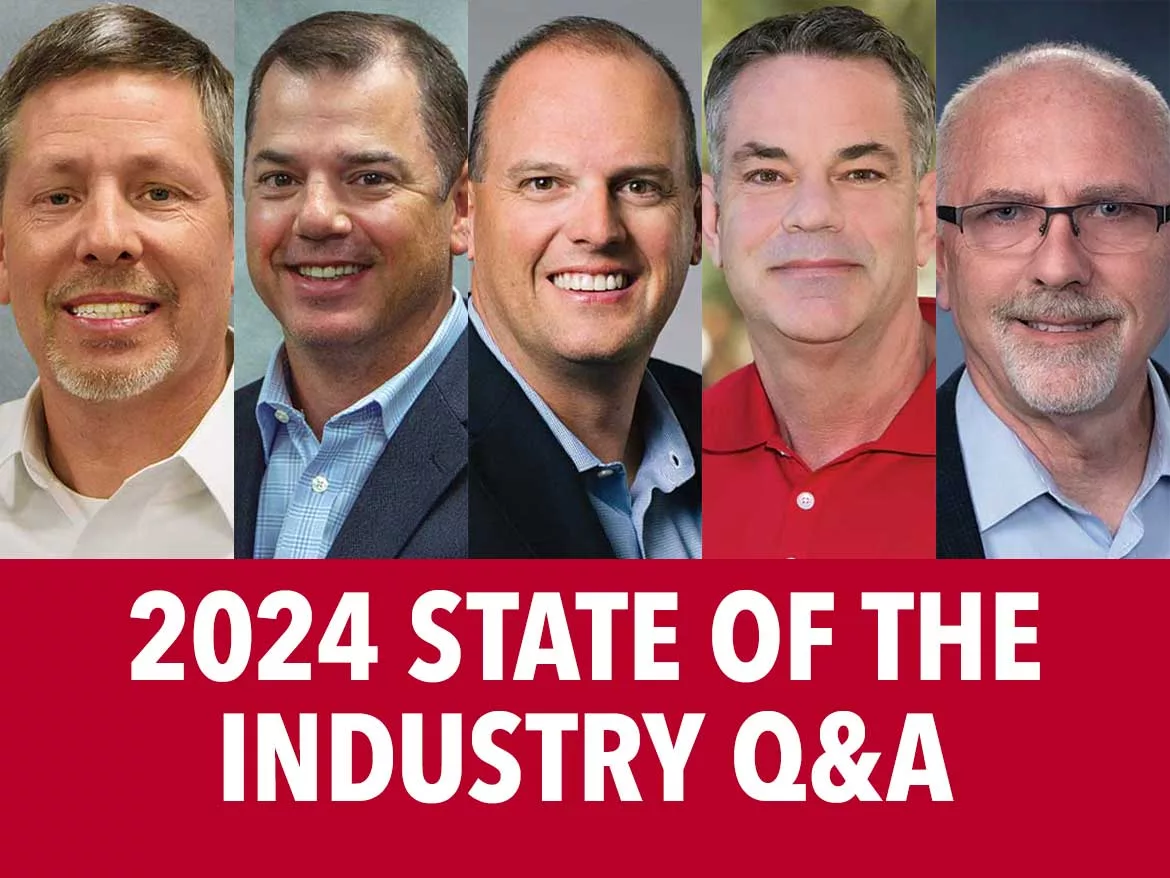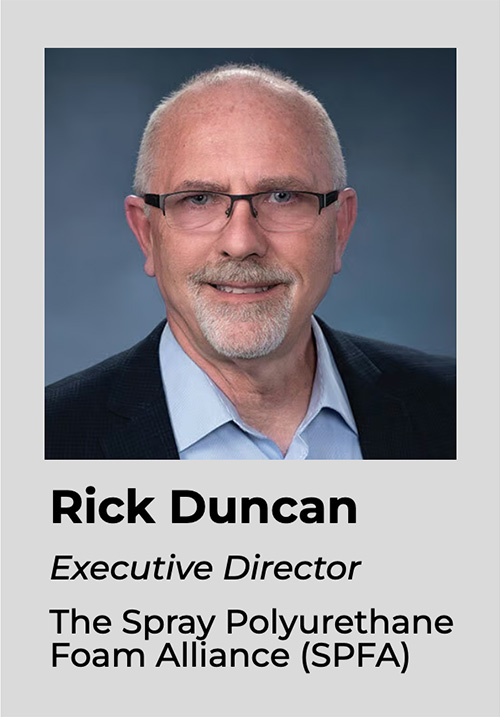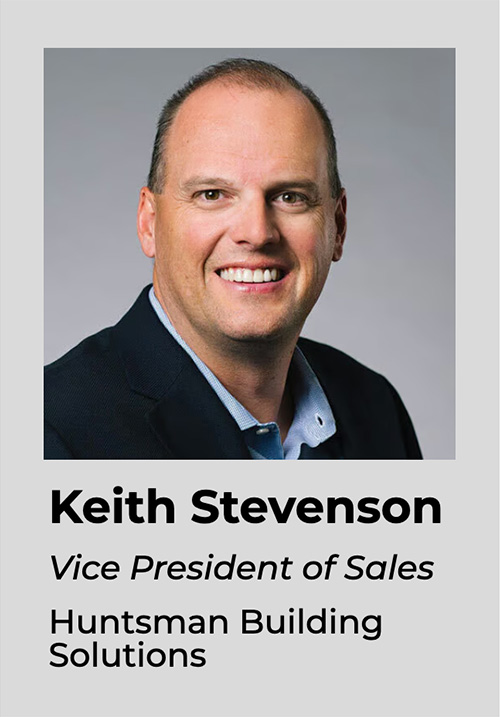2024 State of the Industry Report
State of the Industry Q&A
Leaders weigh in on the new challenges and innovative solutions that await a roofing industry continuing to evolve as a new year gets underway.

To provide a more expansive view of the state of roofing in North America as 2024 gets underway, Roofing Contractor again caught up with industry leaders, asking for their perspectives on the prior year and what lies ahead. We share the following responses to complement the findings of the roofing contractors RC surveyed last fall, which generated our 2024 State of the Industry Report.





RC: How would you characterize the state of the roofing industry looking at 2024?
Keith Stevenson (KS): There will be strong opportunities in 2024. I think we will see normal seasonality when it comes to activity, but there is definitely room for optimism. While the economy will impact our industry, of course, the demand for roofing will continue in both the retrofit and new construction arenas.
Rick Duncan (RD): It has been consistent for our contractors. We have not seen an increase in the industry’s number of roofing contractors. However, the ones that are established seem to be doing well. Today, a lot of the projects out there consist more of reroofing and maintenance. Work in these areas has been steady.
Eric Miller (EM): The roofing industry is currently benefitting from supply chain improvements in both materials and lead times. Both of these areas stabilized substantially in 2023 and should continue to do so in 2024. Unfortunately, indications are that labor will continue to be a challenge, as it is for other construction trades. A lot of this is driven by an aging workforce. Thus, there is a strong need for the industry to focus on the attraction, training and retention of its talent.
Dan Williams (DW): After several extremely challenging and unpredictable years, the low-slope roofing industry is settling into a “new normal.” The supply and demand for materials are starting to get back into balance. And looking at the broader economy, inflation and the general feeling of uncertainty have eased. We [expect] another strong year for Mule-Hide, and we are optimistic about the industry overall.
Rich Thompson (RT): We expect to see an ongoing shortage of skilled labor in the industry, causing challenges for contractors in finding and retaining qualified roofers (which will also impact project timelines). Despite these challenges, there is great opportunity for anyone interested in getting into the trades due to high demand, new incentives and the exciting increase in tech integration throughout the industry.
RC: Any trends that developed in 2023 that you’re monitoring?
KS: A trend we noticed last year that is economically driven has to do with property owners delaying reroofing opportunities to defer spending. Some owners are delaying reroofing their buildings and, instead, extending roofing maintenance plans.
EM: For a while now, we have been paying attention to the growing awareness surrounding energy efficiency and total cost of ownership. Building codes and insurance criteria across different regions are also important to watch as they relate to this. As a company, we also invest in research [to get] to the heart of shifting architectural home style preferences, as well as the accompanying roofing and color trends and preferences among different demographic groups and regions.
RT: We’re continuing to keep a close eye on the renewable energy sector, focusing on changes in energy efficiency regulations and developments in installation expertise. We’re seeing a rising trend of newcomers entering the trade industry, offering potential opportunities for training and technology. We are also excited to see the expansion of Latino entrepreneurs establishing businesses across the U.S.
RC: There’s a lot of optimism in the marketplace over sales. Do you share that view?
RD: From a sales perspective, there is some expectation in certain regions that roofing will pick up. Spray foam roofs, specifically, are almost always low-slope applications in commercial construction. Commercial construction is driven by demand for office and retail space; unfortunately, not a lot of either is being built right now. I don’t see as much optimism on the low-slope roofing side.
EM: Sustainability and resiliency have become much more prominent considerations in construction. Roofing contractors engaging in eco-friendly, energy-efficient and weather-resistant solutions are likely seeing heightened demand, contributing to the positive outlook among contractors.
DW: The supply chain challenges of the past few years have eased. Roofing contractors can once again bid on a job and be confident that the price will hold and that they will be able to get the products they need in a timely manner. General contractors can stand behind the numbers and schedules they give to building owners and developers without having to worry about massive disruptions.
RC: What economic factors could determine a roofing contractor’s success this year?
KS: Labor availability, training and quality products all continue to be key to a roofing contractor’s success. As with all construction trades, there is no way to be successful without the talent to complete the job. Additionally, the best roofing contractors are well-trained and get the job done correctly the first time. They don’t need to return time and time again to the job site to fix things, which is obviously a costly process.
RD: Certainly, inflation-increasing material costs will impact roofing contractors. We experienced some of that during the more recent material shortages, which ended about a year ago. Because our products are petroleum-based, if petroleum prices go up, we will unfortunately see increases in our material prices.
RT: The industry’s workforce shortage [impacts] us as a supplier since fewer active roofers lead to delayed projects and increased workloads for contractors. To support contractors, we’re continuing to leverage technology with myABCsupply online ordering and our newest ABC API. These tools enable contractors to seamlessly integrate ABC Supply data into their existing workflows and help them keep their projects moving efficiently.
RC: How is your organization adapting to meet the anticipated roofing project and material demand?
KS: We have invested heavily over the past few years to increase our capacity and raw materials storage. We are also fortunate to be supported by a parent company that is able to fund additional capacity projects if needed.
DW: Communication is key. Regular conversations with our contractors and distributor partners help us understand their needs and what they are anticipating, allowing us to plan accordingly.
We continue to invest in our people and new technology. The goal always is to make it easier to work with us, from placing an order to completing a job, and help us better support our contractors. We are adding personnel across the board, including territory managers, field technical representatives, and members of our customer service, training, product management and business development teams.
RT: To meet the growing demand and stay current with our customers’ needs, we’re continuing to expand our renewable energy product offerings and adding solar rooftop delivery to our services in select markets. We’re also working closely with our customers and manufacturing partners to make sure we have the right products available to meet the growing demands of metal and coatings.
RC: What are the biggest concerns moving forward?
KS: The overall economy is a concern. Labor is one as well, as it has been for a while now. Something that isn’t necessarily a concern, but rather something to keep an eye on, is that we are now in an election year. Election years can be really fruitful or they can be interesting. We will have to see how things play out as the year progresses.
RD: The carbon footprint reporting requirements for our products will be a challenge. While no regulations have been [implemented] yet, government agencies are now discussing how they want to handle this.
EM: One of the biggest concerns for the industry at large will be escalating raw materials costs. The aging workforce is another top concern, and it is increasingly imperative that we make a concerted effort to attract, train and retain the new generation in roofing. To complement this effort, the industry must also focus on [developing] products that reduce labor demands.
Additionally, with the number and intensity of natural disasters that have occurred over the past several years, there is a lot of activity surrounding the enhancement of building codes.
Looking for a reprint of this article?
From high-res PDFs to custom plaques, order your copy today!








